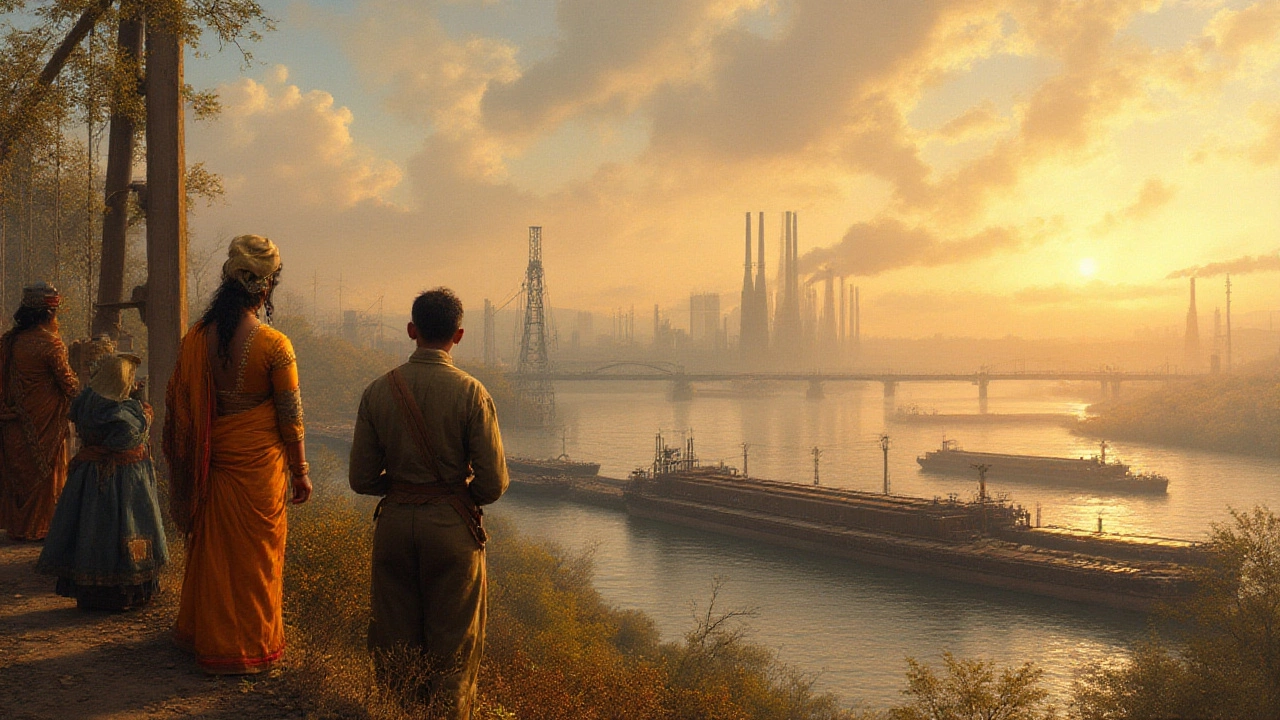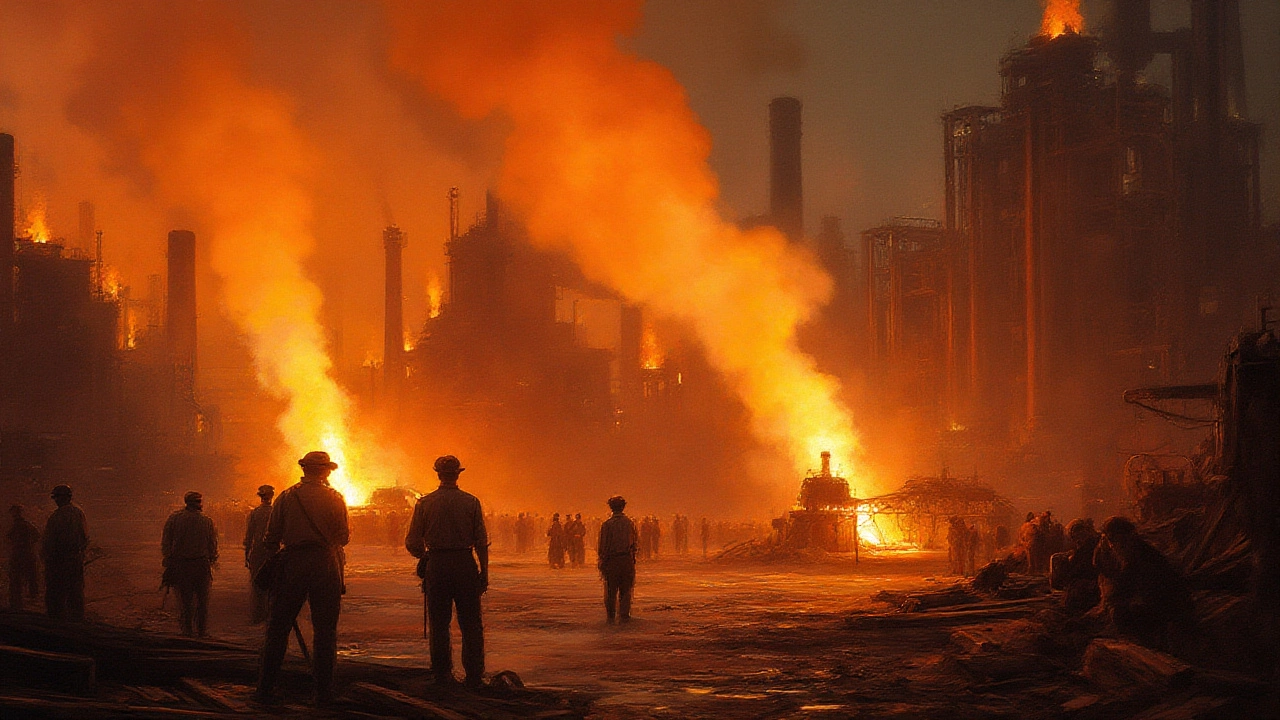Picture a city where the rivers ran thick with industry and the sky glowed orange from the blaze of molten metal. No, this isn’t a scene from a movie—it was everyday life in Pittsburgh, Pennsylvania. You could smell hot steel on the wind and see the smoke-draped skyline miles away. This wasn’t just any American city. It was the Pittsburgh—the one they called the Steel City, the place that built much of modern America. And it didn’t happen by accident. There’s a gritty story behind how Pittsburgh muscled its way to become the steel capital of the world.
Why Pittsburgh? Geography, Innovation, and Grit
So what made Pittsburgh the perfect breeding ground for a steel empire? Geography, first off. It sits right where the Allegheny and Monongahela rivers meet to form the Ohio River. Those rivers were like highways, moving raw materials and finished steel in and out of the city like clockwork. Beneath the ground was another treasure—coal, tons of it, plus plenty of iron ore nearby. Back when railroads and bridges drove the American economy, Pittsburgh’s location pretty much screamed: “Build here!”
By the late 1800s, entrepreneurs like Andrew Carnegie saw what Pittsburgh could offer and kicked things into high gear. Carnegie didn’t just open mills—he revolutionized steel making with the Bessemer process, slashing the cost and pumping out steel faster than anyone thought possible. Local inventors and engineers kept shaving down costs, making the industry more efficient year by year. Pittsburgh’s mills, from Homestead to Braddock, weren’t just factories. They were innovation labs where sharper tools and clever technology pushed the steel game forward.
The city’s people made it happen too. Immigrants poured in from Scotland, Ireland, and Eastern Europe willing to sweat—and risk their lives—in the mills. They worked 12-hour shifts in blistering heat, forging not just steel but a whole way of life. Kids grew up knowing that Pittsburgh steel made the skyscrapers in New York, the railroads out west, and the ships that fought in World War II. The city became its own brand. In 1910 alone, Pittsburgh’s mills produced more steel than the whole United Kingdom. That’s a mind-blowing stat if you think about it.
The Rise: Building America By the Ton
By the early 20th century, if something big in America was made of steel, the odds were good it came from a Pittsburgh mill. Bridges, buildings, autos, warships—you name it. The Brooklyn Bridge, the Empire State Building, Hoover Dam, the Golden Gate bridge, the locks on the Panama Canal—all built with Pittsburgh steel at their core. During World War II, the city’s mills ran 24/7. If you lived in Pittsburgh back then, you learned to tune out the constant thumping and hissing from the plants, plus the occasional glow in the sky from the blast furnaces at night.
Here’s a snapshot of just how insane the numbers got. By 1946, mills from companies like U.S. Steel, Jones & Laughlin, and Carnegie-Illinois were churning out more than half of America’s steel. Want a quick look at how dominant Pittsburgh was? Check out this table of production from the height of its steel might in the 1940s:
| Year | Steel produced by Pittsburgh (million tons) | Share of US total (%) |
|---|---|---|
| 1930 | 16 | 38% |
| 1940 | 24 | 45% |
| 1946 | 31 | 51% |
This was American muscle at its peak. But if you were in town back then, you also saw the flip side—smog so thick that cars sometimes needed headlights at noon. Nobody back then called it the "steel city" just because of what they made. It was because steel literally ran through everyday life, good and bad.
People got creative too. Workers, many of them first- or second-generation Americans, formed tight neighborhoods—mini-nations with their own food, music, and customs. The mills had softball leagues, church picnics, and strikes that sometimes turned violent, like at Homestead in 1892. That strike became a rallying cry for labor rights, and it all happened in the shadow of steel mills. If you want to understand American industry, you have to get Pittsburgh.

Decline and Reinvention: How Pittsburgh Coped When the Boom Ended
Pittsburgh’s steel heyday didn’t last forever. In the 1970s and 80s, international competition, automation, and changing technologies hit hard. Suddenly, cheaper steel from Japan and Europe flooded the American market. Mills that once ran nonstop ground to a halt. The layoffs hit families who’d counted on the industry for generations.
It was brutal. More than 150,000 steel jobs vanished from southwestern Pennsylvania between 1981 and 1985. Some towns shrank by half. For a while, it looked like Pittsburgh itself might go under.
But this isn’t a story with a sad ending. Pittsburgh folks are nothing if not stubborn. They started turning their old mills and rail yards into something new—universities, hospitals, and tech startups. Carnegie Mellon University and the University of Pittsburgh swelled with research labs. The city started growing again as a hub for robotics, healthcare, and education. Even Google and Uber set up shop downtown. What used to be soot-black rivers are now parks and kayak routes. Despite the steel bust, the toughness stuck around. Younger generations brag about their ironworker grandfathers and the city’s blue-collar roots, even if they work in AI now.
There are echoes of the steel era everywhere—old smokestacks turned into public art, murals of working men with tongs and helmets, steel bridges arching across the rivers. The history is baked in, even as the city transforms. People who grew up here still call it the Steel City, and it’s more than nostalgia. It’s a badge of pride.
Pittsburgh’s Steel Legacy: What You See Today
If you visit Pittsburgh today, you might be surprised. The smoke is gone, the rivers look clean, and the downtown skyline sparkles at night. But you’ll still find traces of the old industrial muscle everywhere. There’s Heinz Field, where the Steelers play—named for the city’s famous food factories, but just as tied to its working-class spirit. There’s the Carrie Blast Furnaces, now a national historic landmark where you can walk inside the guts of what made America’s railroads and skyscrapers.
If you’re looking for real steel history, stop by the Rivers of Steel National Heritage Area. They offer tours inside old mills, as well as boat rides that show off Pittsburgh’s 446 bridges—more than any other city in the world, built with steel that was likely forged within shouting distance. You can even take home a souvenir: local shops sometimes sell bits of old rebar or blacksmith-made jewelry from steel that once shaped the skyline.
Pittsburgh also embraces its immigrant mix, from Polish pierogi shops to Croatian bakeries. Don’t be surprised if your Uber driver’s grandma once worked on a rivet crew or your barista’s great-granddad hammered iron in Homestead. These stories have a way of sticking around.
What stands out is how the city’s toughness and pride survived even as the smokestacks disappeared. Every year, the city hosts festivals honoring workers and the bridges they built. They don’t let anyone forget where Pittsburgh came from, and that’s rare. It’s no stretch to say that America wouldn’t look the way it does—skyscrapers, freeways, tanks, and ships—without the sweat and muscle from one city on three rivers. Pittsburgh earned its title as the steel capital of the world the hard way, and it’s impossible to walk the streets without feeling that legacy under your feet.
